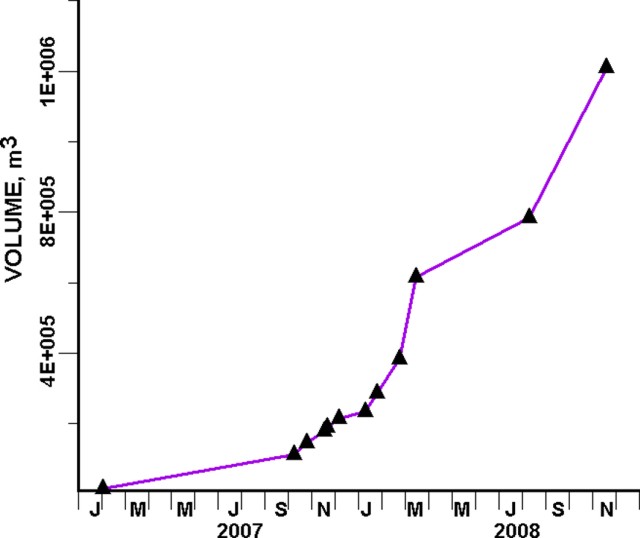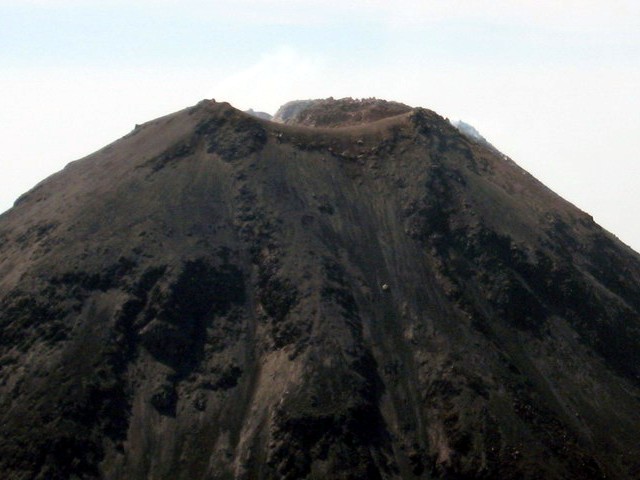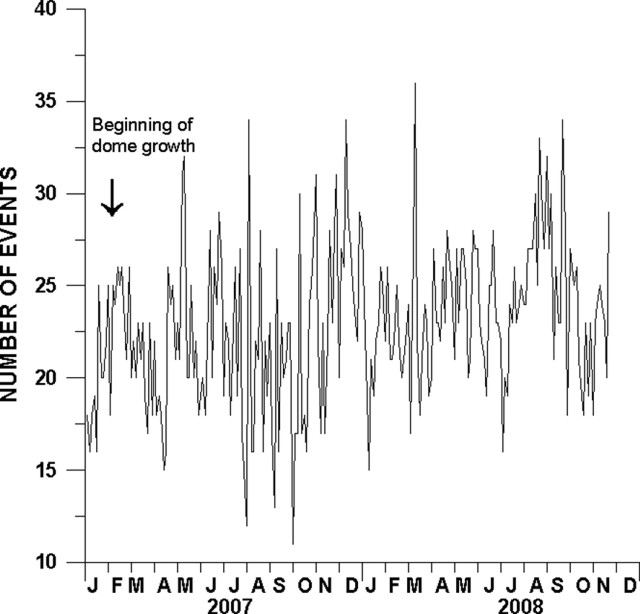Report on Colima (Mexico) — October 2008
Bulletin of the Global Volcanism Network, vol. 33, no. 10 (October 2008)
Managing Editor: Richard Wunderman.
Colima (Mexico) New dome growth during 2007 to November 2008
Please cite this report as:
Global Volcanism Program, 2008. Report on Colima (Mexico) (Wunderman, R., ed.). Bulletin of the Global Volcanism Network, 33:10. Smithsonian Institution. https://doi.org/10.5479/si.GVP.BGVN200810-341040
Colima
Mexico
19.514°N, 103.62°W; summit elev. 3850 m
All times are local (unless otherwise noted)
A new episode of lava dome growth in the crater was first observed on 1 February 2007 (BGVN 33:04). During its initial stage (February-September 2007), the mean effusion rate was about 0.004 m3/s. The rate of effusion increased significantly in October 2007, up to 0.033 m3/s.
New observations during overflights on 1 August and 8 November 2008 showed a significant increase in the dome volume (figure 87), reaching ~ 1,200,000 m3. The effusion rate during August-November 2008 increased up to 0.05 m3/s. By late November, the dome filled more than 50% of the crater and could be easily seen above the crater rim (figure 88). This dome growth has been accompanied by 5-10 small explosions daily without significant variations during two years of activity (figure 89).
 |
Figure 87. Cumulative volume of dome material extruded at Colima during January 2007-early November 2008. Courtesy of Colima Volcano Observatory. |
 |
Figure 88. Photo of the dome taken on 21 November 2008 from the top of Nevado de Colima (6 km N of Volcán de Colima). Courtesy of Colima Volcano Observatory. |
 |
Figure 89. Variations in the number of small explosions (3-day sums) recorded by a seismic station situated at 1.6 km from the crater. Courtesy of Colima Volcano Observatory. |
Geological Summary. The Colima complex is the most prominent volcanic center of the western Mexican Volcanic Belt. It consists of two southward-younging volcanoes, Nevado de Colima (the high point of the complex) on the north and the historically active Volcán de Colima at the south. A group of late-Pleistocene cinder cones is located on the floor of the Colima graben west and east of the complex. Volcán de Colima (also known as Volcán Fuego) is a youthful stratovolcano constructed within a 5-km-wide scarp, breached to the south, that has been the source of large debris avalanches. Major slope failures have occurred repeatedly from both the Nevado and Colima cones, producing thick debris-avalanche deposits on three sides of the complex. Frequent recorded eruptions date back to the 16th century. Occasional major explosive eruptions have destroyed the summit (most recently in 1913) and left a deep, steep-sided crater that was slowly refilled and then overtopped by lava dome growth.
Information Contacts: Observatorio Vulcanológico de la Universidad de Colima, Colima, Col., 28045, México (URL: https://portal.ucol.mx/cueiv/).

